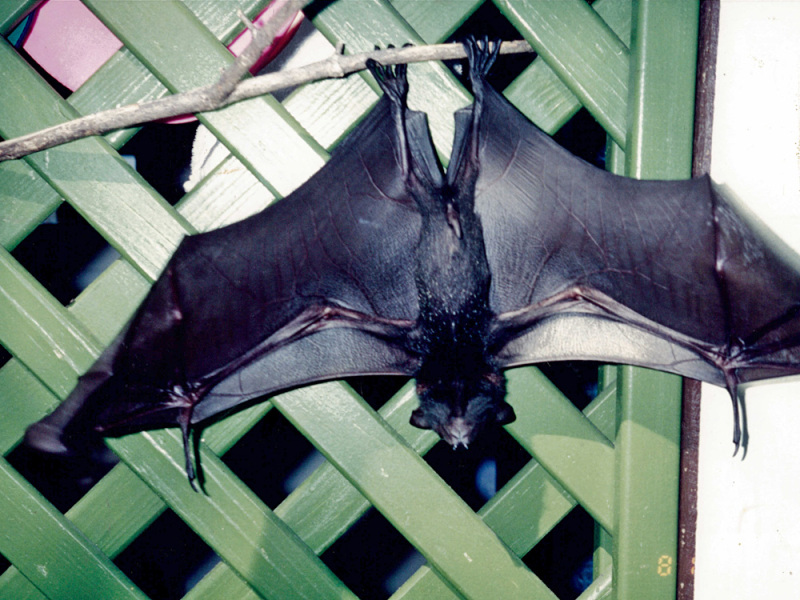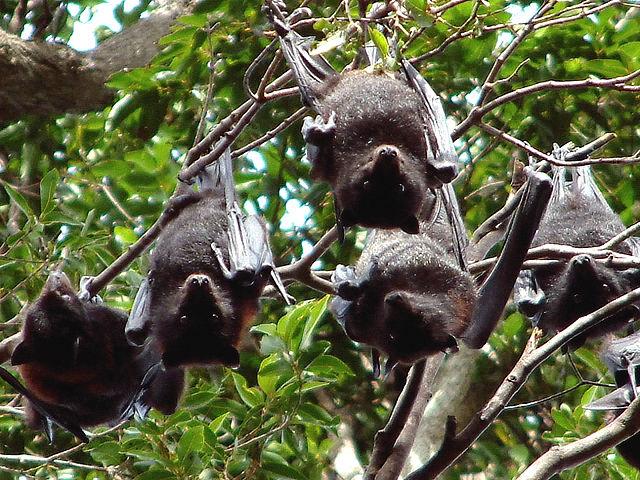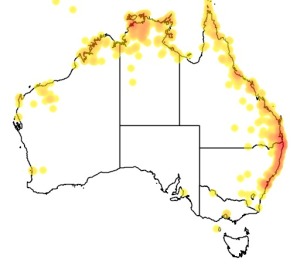�
�
�
���
Pteropus alecto
Black Fruit Bat
Kingdom
Animalia
Phylum
Chordata
Class
Mammalia
Order
Chiroptera
Family
Pteropodidae
Genus
Pteropus
Species
Pteropus alecto
Status
least concern
Colours
Distinguishing features
Distinguishing features still need to be specified.
Size
- Size data has not been obtained.
Wingspan
- Up to 100 cm
Synonyms
Distribution
Distribution and habitat preferences
Black flying-foxes tend to roost in trees rather than in caves. Favoured roosting environments include mangroves, paperbark swamps, and rainforest habitats.
Behaviour
Black flying-foxes spend the day resting in colonies that can include many thousands of bats. They feed on pollen and nectar from native trees.
Web resources
References
- Gates, J. and P. Hoyle (1990). Lore from the Lizard: Lizard Island Research Station, Australian Natural History, 23(4): 314-321. LIRS catalog number 402.
- Reef, R., I.C. Feller and C.E. Lovelock (2014). Mammalian herbivores in Australia transport nutrients from terrestrial to marine ecosystems via mangroves, Journal of Tropical Ecology, doi:10.1017/S0266467414000054: 1-10. LIRS catalog number 1762.


